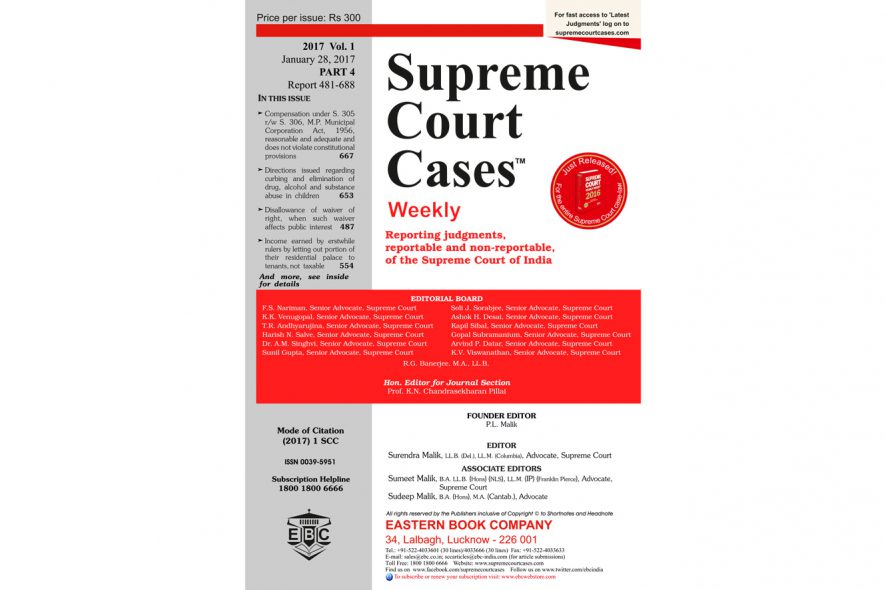- Supreme Court — Jurisdiction, Problem of Pendence by Justice J. Chelameswar, (2015) 9 SCC (J-1): In this article, author attempts to identify the reasons for problem of pendency in Supreme Court and suggest some possible solutions for the reduction of the pendency as well as the reduction of the time taken for the disposal of cases brought to the Supreme Court.
- Rights of Minorities to Establish and Administer Educational Institutional: Some Constitutional Reflections by Haris Jamil and Abdullah Nasir, (2015) 9 SCC (J-33): Protection of minorities is the hallmark of a civilisation. In a particular social structure, majority and minority communities are differently positioned to enjoy equal rights and fundamental freedoms. Minorities need special safeguard to conserve and protect their cultural, religious and educational rights. It has been emphasized in this article that the Supreme Court has played a very important role in the development of jurisprudence on the minority right to establish and administer educational institutions of their own choice. Governmental guidelines on the recognition of minority institutions are based on the judgments of the Court.
- Basic Structure Doctrine — No Trojan Horse by V. Sudhish Pai, (2015) 9 SCC (J-29): The basic structure doctrine has been judicially and judiciously evolved as a substantive ground to challenge a constitutional amendment. This has been expressly and unequivocally laid down. Any observations to the contrary do not detract from such binding legal position laid down by various Constitution Benches.
- Copyright (Amendment) Act, 2012 and Copyright Rules, 2013 — Vagaries, Validity and Vires by Brij Kishore Sharma, (2015) 9 SCC (J-11): Through this article an attempt has been made to judge the validity and vires of the amending provisions of Copyright (Amendment) Act, 2012 and Copyright Rules, 2013.
- The Married Women’s Property Act, 1874: Lost in Obscurity? by Jasleen K. Oberoi and Ayush Sharma, (2015) 9 SCC (J-24): In India, the Married Women’s Property Act was one of the fundamental reforms in the 19th century in respect of married women’s right to property and was the first endeavour of its kind recognising the concept of wife’s “separate property”. The MWP Act was enacted in light of the old common law notion that wife’s person was, for all legal purposes, merged in that of her husband and that, while the marriage lasted, her real estate and (with certain exceptions) her personal property became her husband’s property. The MWP Act also sought to recognise that the separate liability of a wife should no longer be proprietary only, but should be a personal liability, quite independent of her husband.
Articles published in 2015 SCC Vol. 9 October 28, 2015 Part 2
Supreme Court — Jurisdiction, Problem of Pendence by Justice J. Chelameswar, (2015) 9 SCC (J-1): In this article, author attempts to identify






